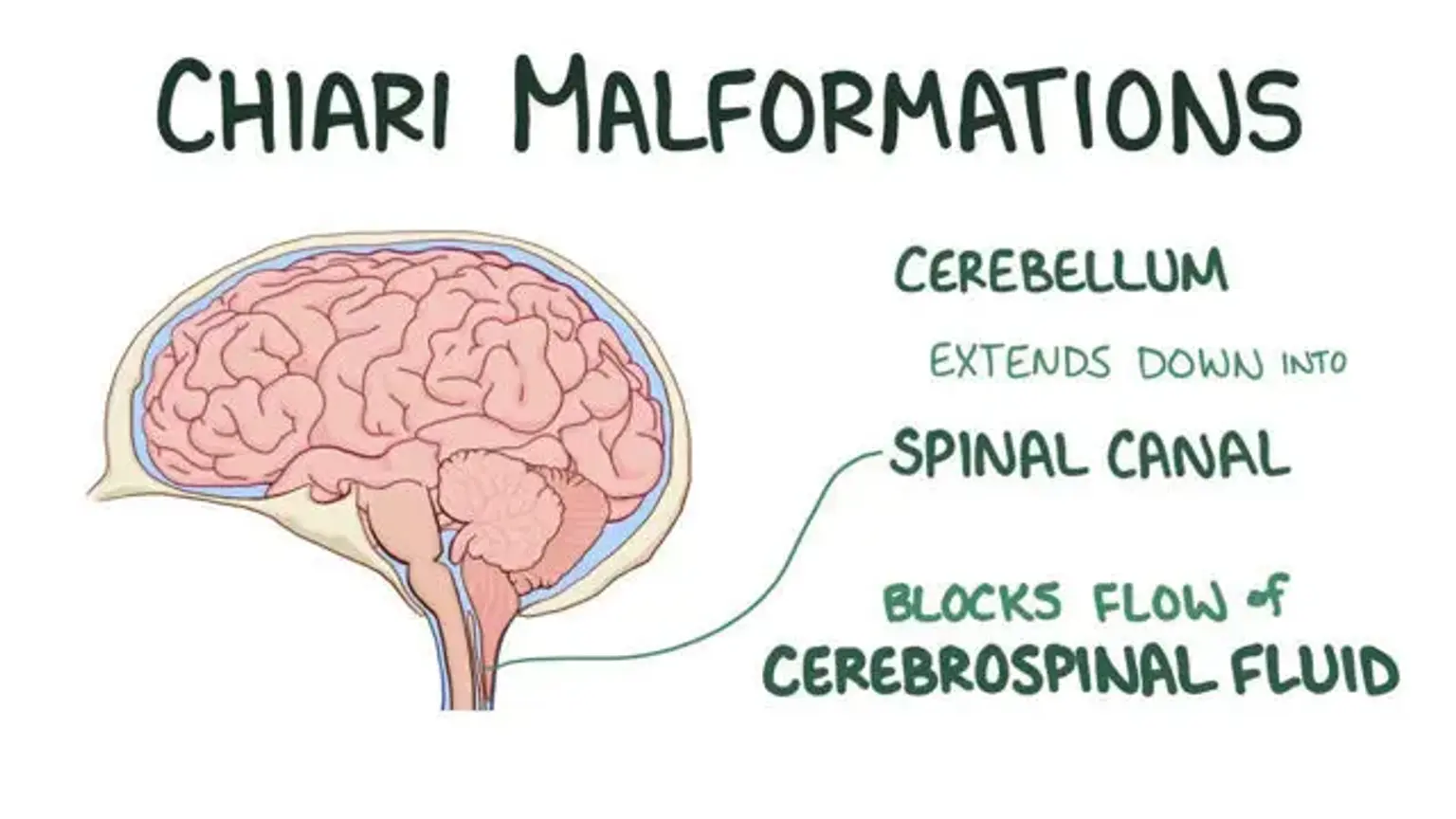Chiari malformation
Chiari malformation refers to the structural problems within the skull and the cerebellum base. The cerebellum and the brain stem areas normally sit over a hole in the skull through which the spinal cord passes. It's known as Chiari malformation, when a portion of the cerebellum extends into the upper spinal canal below the foramen magnum.
When a portion of the skull is small or malformed, it presses on the brain. It also forces the cerebellum down into the spinal canal, causing Chiari malformations. Pressure on the brain stem and cerebellum may disrupt normal functions regulated by these regions and obstruct the cerebrospinal fluid (CSF) flow.
